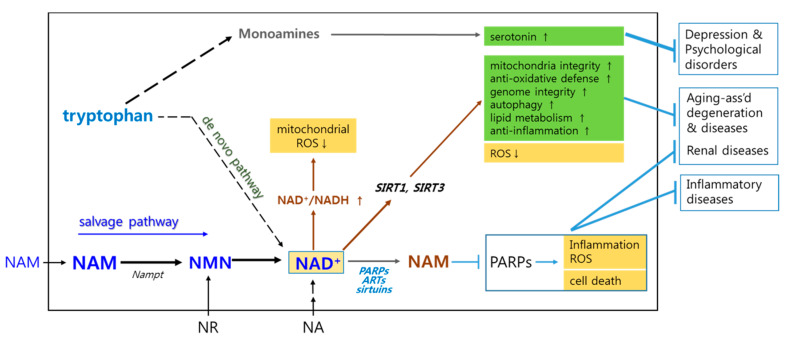Figure 1.
A schematic representation of routes of metabolism and beneficiary effects of NAM. In cells (grey-lined box), NAM is converted to nicotinamide adenine dinucleotide (NAD+) mainly through salvage pathways via nicotinamide mononucleotide (NMN). NAD+ is reduced to become NADH and thereby, establishes NAD+ redox, through which NAM treatment affects mitochondrial energetics and ROS generation. NAD+ is also broken down to NAM and ADP-ribose by poly(ADP-ribose) polymerases (PARPs), sirtuins, and a family of ADP-ribose transferases (ARTs), to which NAM exerts feedback inhibition. Among these, inhibition of PARPs constitutes an important route of anti-inflammatory, anti-oxidative, and pro-cell survival effects. Increased level of NAD+ activates sirtuin proteins such as SIRT1 and SIRT3, which exert a variety of cell-beneficiary effects such as anti-oxidation, genome stability, autophagy, and lipid metabolism. In addition, they together maintain mitochondria quality and integrity, and thereby, keep reactive oxygen species (ROS) generation at low level. Through these, NAM may exert effects against aging-associated degeneration and diseases, and renal and inflammatory diseases. Through these effects, NAM may help protecting neurons and pancreatic β-cells. Meanwhile, a minor portion of cellular NAD+ pool is provided through de novo synthesis from tryptophan, which is also a source for serotonin. Therefore, NAM supplement helps maintaining serotonin level, and thereby alleviates depression and psychological disorders. NAD+ level is also elevated through supplementation of nicotinamide riboside (NR) and nicotinic acid (NA).

